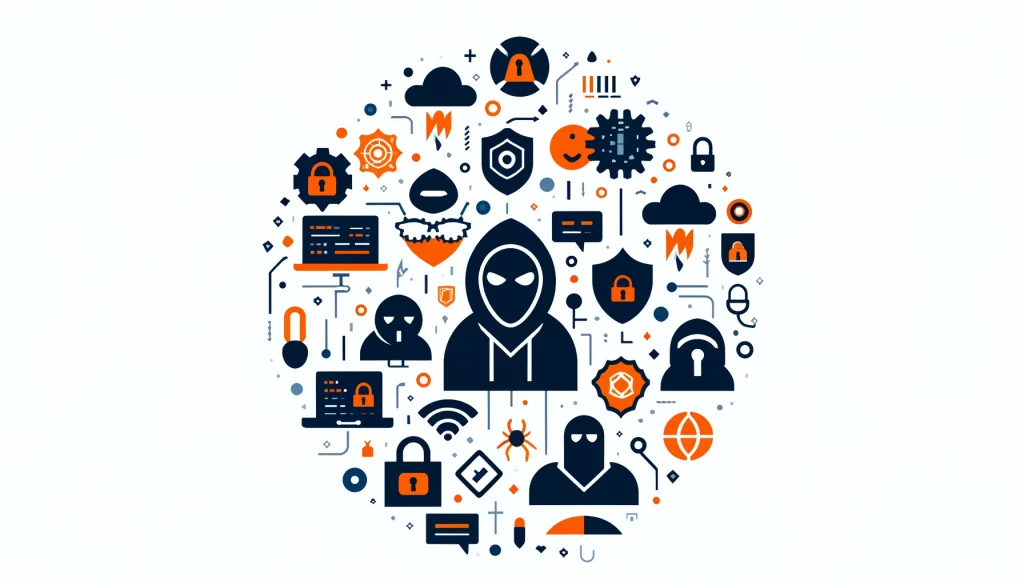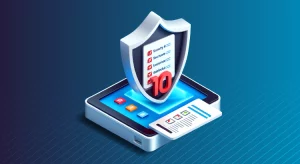
Cybersecurity Threats: Types, Sources, and How to Protect Against Them

Cybersecurity threats have become a major concern for individuals and organizations alike. Bad people do bad things like stealing data, damaging computers, or messing up how things work. Cybersecurity threats come in various forms, each with its own unique characteristics and potential impact. This article will discuss the various cyber threats, where they come from, and how to reduce the risks.
Common Sources of Cyber Threats
Cyber threats can originate from a variety of sources, each with their own motivations and objectives. Some of the most common sources of cyber threats include:
Nation States
Some countries may try to attack local businesses and organizations online to disrupt communication, create chaos, or cause harm. Attacks from nation-states are hard to defend against. These attacks are advanced and well-resourced. They also have a lot of expertise.
Terrorist Organizations
Terrorist groups may use cyber attacks to harm critical infrastructure, threaten national security, disrupt economies, or hurt citizens physically. These attacks can be highly coordinated and may target vulnerable systems or exploit weaknesses in security measures.
Criminal Groups
Organized groups of hackers often target organizations with the goal of breaking into computing systems for economic gain. Criminals use tricks like phishing, spam, spyware, and malware to steal money and personal information from people online. Their attacks are focused and may use known weaknesses or tricks to access important information.
Hackers
Individual hackers may target organizations using a wide range of attack techniques. Their motivations can vary, from personal gain and revenge to financial gain and political activism. Hackers create new threats and techniques to improve their criminal skills and reputation in the hacker community. Some hackers may also work independently or as part of larger criminal groups.
Malicious Insiders
In some cases, the threat may come from within the organization itself. An employee, contractor, or supplier with access to company assets may steal information or damage systems for personal gain. Insiders with detailed knowledge of the systems and security measures can be especially dangerous. They can easily bypass defenses and carry out malicious activities.
Types of Cybersecurity Threats
Cybersecurity threats can take many forms, each with its own unique characteristics and potential impact. Some of the most common types of cyber threats include:
Malware Attacks
Malware, short for “malicious software,” encompasses a wide range of threats, including viruses, worms, trojans, spyware, and ransomware. Malicious programs can enter a system through various means. These include clicking on a bad link, opening a harmful email attachment, or downloading unwanted software. Malware, once installed, can gather important information, control network access, or even delete data and shut down systems completely.
One of the most prevalent types of malware is ransomware. A ransomware attack occurs when malicious software encrypts a victim’s files. The attacker then demands a ransom payment in exchange for the decryption key. This attack can be harmful for organizations, causing downtime, financial losses, and damage to their reputation.
Social Engineering Attacks
Social engineering attacks involve tricking users into providing sensitive information or unwittingly installing malware on their devices. During these attacks, the perpetrator pretends to be a trusted individual, such as an employee or tech support. They deceive the victim into sharing private information or granting access to their computer systems.
Phishing is one of the most common forms of social engineering. In a phishing attack, the attacker sends fake emails or messages. These emails or messages appear to be from a trusted source, such as a bank or social media site.
These messages are often urgent or offer tempting deals. They try to get the recipient to click on a harmful link or share sensitive information. Certain types of phishing, such as spear phishing and whaling, send personalized messages to specific individuals or important targets.
Supply Chain Attacks
Supply chain attacks have emerged as a significant threat to software developers and vendors. The attacks aim to infect real applications with malware. They target the source code, build processes, or update mechanisms. Attackers can avoid normal security measures by attacking the supply chain, allowing them to access various systems and networks.
Hackers executed a supply chain attack in late 2020, targeting SolarWinds in a breach that security experts discovered. In this attack, hackers managed to compromise the software build process of SolarWinds, a prominent IT management software provider. Hackers gained access to government and private company networks by inserting harmful code into SolarWinds software updates.
Man-in-the-Middle Attacks
Man-in-the-Middle (MitM) attacks occur when someone intercepts communication between two parties. This could be a user and an application. The attacker then listens in on or alters the shared data.
During these attacks, someone can steal important information such as passwords or financial details. They may also impersonate someone else to gain unauthorized access to systems.
One common example of a MitM attack is Wi-Fi eavesdropping. A hacker can create a fake Wi-Fi network that looks real, such as one for a coffee shop or airport. This network is to deceive people into connecting to it.
This can lead to the hacker gaining access to the connected devices. When someone connects to a bad network, a malicious individual can spy on their online activity. This means they can see any information sent over the network, such as passwords and credit card numbers.
Denial-of-Service Attacks
DoS attacks flood a system with traffic to make it unable to work properly or respond to real requests. In a DDoS attack, the attacker uses many compromised devices to make the attack stronger and cause more disruption.
DoS and DDoS attacks can have severe consequences for organizations, leading to website downtime, reduced productivity, and financial losses. A DDoS attack may make an online store inaccessible to customers. This can result in lost sales and damage to the store’s reputation. Similarly, a company’s internal network may become unresponsive, preventing employees from accessing critical resources and hindering business operations.
Injection Attacks
Injection attacks exploit vulnerabilities in web applications to insert malicious code or commands into the application’s underlying systems. These attacks can take various forms, such as SQL injection, code injection, and cross-site scripting (XSS).
A hacker can access important data, change or delete information, or take over the system through an injection attack. A hacker can gain access to important data. They can also change or delete information. Additionally, they can take over the entire system.
One of the most common types of injection attacks is SQL injection. In this attack, the attacker puts harmful code into an application’s input fields like login forms or search bars. If the application fails to check user input correctly, the database can run harmful code. This lets attackers access, change, or delete important data in the database.
Cybersecurity Solutions
To defend against the wide range of cyber threats, organizations must employ a comprehensive set of cybersecurity solutions. These solutions protect various parts of a company’s digital infrastructure, like applications, networks, endpoints, and cloud environments. Some of the key solutions include:
Application Security
Application security solutions focus on identifying and mitigating vulnerabilities in software applications throughout their development lifecycle and during runtime. These solutions analyze the source code and behavior of an application to find security flaws.
They can be static (SAST) or dynamic (DAST) security testing methods. Web application firewalls (WAFs) can protect apps from web attacks like SQL injection and cross-site scripting. They are deployed for added security.
Network Security
Network security solutions watch network traffic, find and stop bad activity, and keep unauthorized users out. These solutions can include firewalls, intrusion detection and prevention systems (IDPS), and virtual private networks (VPNs). Organizations can protect their digital assets and reduce the risk of cyber attacks by using strong network security measures.
Cloud Security
As more organizations adopt cloud computing, the need for effective cloud security solutions has become increasingly important. Cloud security solutions help organizations secure their data and applications hosted in public, private, or hybrid cloud environments.
Two solutions for cloud security exist: CASBs and CWPPs. CASBs monitor and control access to cloud resources. CWPPs protect workloads in the cloud from vulnerabilities and misconfigurations.
Endpoint Security
Endpoint security solutions protect devices such as computers, laptops, and smartphones from cyber threats. These solutions can include antivirus software, endpoint detection and response (EDR) tools, and mobile device management (MDM) platforms. By securing endpoints, organizations can prevent malware infections, detect and respond to suspicious activities, and enforce security policies across their device fleet.
Threat Intelligence
Threat intelligence solutions give organizations current information on new cyber threats, attack tactics, and indicators of compromise (IOCs). By leveraging threat intelligence, security teams can proactively identify and mitigate potential threats before they cause significant damage. Threat intelligence comes from various sources such as open-source feeds, commercial providers, and industry-specific ISACs for analyzing.
Conclusion
Cybersecurity threats pose a significant risk to individuals and organizations in today’s interconnected digital world. Organizations must stay alert and proactive against cyber threats that are always changing to protect their security. Companies should learn about cyber threats and use security tools to protect online information and make customers feel safe.
Organizations need to promote cybersecurity awareness and provide ongoing training for employees to protect against evolving cyber threats. Companies can protect against cyber attacks by teaching people how to identify and respond to online dangers.
Moreover, collaboration and information sharing among organizations, government agencies, and cybersecurity experts are crucial in the fight against cyber threats. When security experts share information, tips, and experiences, they can develop stronger plans to combat online dangers.
To avoid cyber attacks, organizations should prioritize security and use a proactive, multi-layered defense approach. This approach helps protect their digital assets and ensures they can withstand the constantly evolving landscape of cyber threats. This helps them protect their digital assets and stay resilient.
